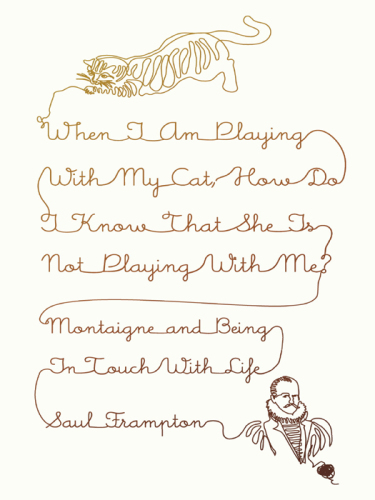
When I Am Playing with My Cat, How Do I Know That She Is Not Playing with Me?
Montaigne and Being in Touch with Life
کتاب های مرتبط
- اطلاعات
- نقد و بررسی
- دیدگاه کاربران
نقد و بررسی

Starred review from January 3, 2011
With deceptive casualness, Frampton, assistant editor of the London Review of Books, renders a rigorous history of ideas in this engaging account of the life and the work of Michel de Montaigne (1533–1592). After enduring in short succession the deaths of his daughter; father; best friend; and brother, "killed absurdly, tragically, by the blow from a tennis ball," Montaigne retreated to his tower library, intending to write and prepare himself for his own death. Out of this dismal exercise came Les Essais, his eccentric and invaluable essays on his milieu, philosophy, and preoccupations. Frampton tucks a good deal of biography into his tour of the evolution of the essays and the events that inspired them—but his extraordinary achievement is in conveying—and inviting the reader to commune with—Montaigne's unique sensibility and his take on death, sex, travel, friendship, kidney stones, the human thumb, and above all, "the power of the ordinary and the unremarkable, the value of the here-and-now." This scholarly romp through the Renaissance is a jewel.

January 1, 2011
Frampton's introduction to the life and thought of that most humane late Renaissance figure, Montaigne, suffers from unfortunate timing, with its publication five months after Sarah Bakewell's estimable How To Live: Or a Life of Montaigne in One Question and Twenty Attempts at an Answer. But regardless of timing, Frampton's style is ham-handed, e.g., this would have been a much shorter book if all sentences beginning with "And" or "But" had been edited. The content, while acceptable early on, deteriorates in later portions. Several of Frampton's conclusions are strained and anachronistic. Can one argue that Montaigne intuited the modern sciences of proxemics ("the anthropology of people's relations to each other in space") and kinesics? How can Montaigne's thought really "echo" the 20th-century Japanese philosopher Watsuji Tetsuro's writings on "betweenness"? Frampton writes of "empathy neurons," and he devotes more than a page to summarizing Stanley Milgram's 1970s experiments on obedience to authority, as though Montaigne had somehow anticipated modern-day ideas and concerns 400 years before they surfaced. Montaigne, for all he speaks to us still, was very much a man of his times. VERDICT There are worthwhile insights in this book, but they are buried in the dross. Try Bakewell's book instead.--David Keymer, Modesto, CA
Copyright 2011 Library Journal, LLC Used with permission.

Starred review from March 1, 2011
Everyone looks in front of himself; wrote Montaigne. As for me . . . I consider myself continuously: I taste myself. In Montaignes intense self-absorption, Frampton discerns the rich literary fruit of a stunning midlife volte-face. For decades devoted to a Christian stoicism that prepares the devout for death, Montaigne reacted to a series of deaths in his immediate circle by rediscovering life. Thereafter the writer immersed himself in all the immediate sense impressions that his unpredictable curiosity opened to him. Recorded in his famous essays, this renascent joy in life endows rather simple experiencesplaying with a cat, walking through an orchardwith unexpected emotional resonance. Frampton underscores the essential humaneness of Montaignes life-affirming literary art by contrasting it with the desiccating rational philosophizing of Montaignes countryman Ren' Descartes. For unlike the Cartesian conceptual rigor that divides man from nature, man from man, in its unrelenting quest for certainty, Montaignes open-ended search for an organic and unifying vision culminates in tolerant social relations. Readers indeed see how Montaigne made his literary outlook the basis for real-world efforts to foster peace between lethally antagonistic Catholic and Protestant zealots. Recognizing the twenty-first centurys own need for advocates of life-affirming tolerance, readers will embrace this insightful portrait.(Reprinted with permission of Booklist, copyright 2011, American Library Association.)

























دیدگاه کاربران